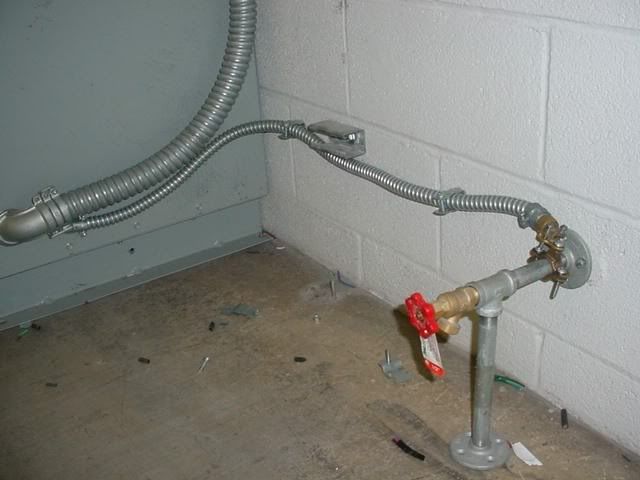crossman
Senior Member
- Location
- Southeast Texas
This was discussed in a recent thread. I would like to get further opinions on the photo below (the photo is a mock-up used for training).
Here we have a xfmr (seperately derived system) with a #8 grounding electrode conductor installed in flexible metal conduit. At the waterpipe, the flex is terminated to the ground clamp. At the xfmr, the flex is connected with a 90 degree flex fitting.
Question 1: Using 250.64(B), is the flexible metal conduit as an enclosure for the GEC permissible?
Question 2: Does the 90 degree connector require a bonding bushing and bonding jumper to the case?

Edit: corrected grammar
Here we have a xfmr (seperately derived system) with a #8 grounding electrode conductor installed in flexible metal conduit. At the waterpipe, the flex is terminated to the ground clamp. At the xfmr, the flex is connected with a 90 degree flex fitting.
Question 1: Using 250.64(B), is the flexible metal conduit as an enclosure for the GEC permissible?
Question 2: Does the 90 degree connector require a bonding bushing and bonding jumper to the case?

Edit: corrected grammar
Last edited:

